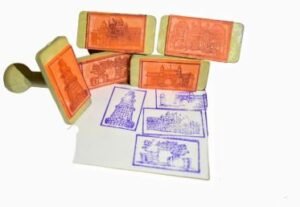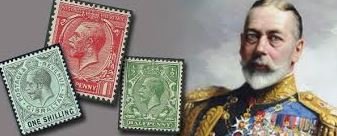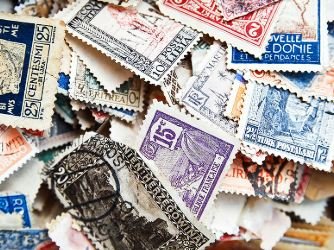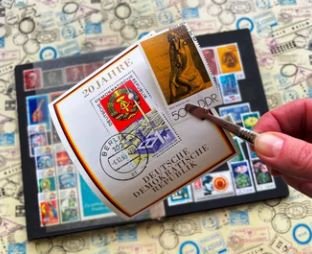Stamp collecting is a hobby that has fascinated enthusiasts for centuries, with collectors focusing on everything from historical figures and rare designs to unique themes and specific countries. One category of stamps that has captured the interest of both philatelists and educators alike is educational stamps. These stamps are often rich in imagery, symbolism, and historical context, providing a window into various educational themes, such as science, literature, and world history. However, the question remains: Are educational stamps a rich resource for knowledge or merely a niche obsession?

In this article, we’ll explore the potential of educational stamps as valuable tools for learning and how they fit into the broader world of stamp collecting. We’ll also consider whether they are truly a rich resource for knowledge or whether their appeal is limited to a small group of collectors who are passionate about this specialized area of philately.
What Are Educational Stamps?
Educational stamps are a category of postage stamps that typically feature images related to education, historical figures in education, or educational symbols and institutions. These stamps can depict a wide range of themes, such as scientific discoveries, notable educators, famous writers, or educational milestones in various countries. Many of these stamps were created with the intention of commemorating events, people, or ideas that had a significant impact on the world of learning.
For example, in the United States, the 1893 “Columbian Exposition” series featured stamps that celebrated important historical figures and achievements. Some stamps even highlight specific subjects, such as mathematics, literature, or inventions that transformed society. These educational stamps provide collectors with much more than just a simple image—they often tell a rich story about the cultural, political, or intellectual climate of the time they were issued.
Educational Stamps: A Rich Resource for Knowledge
For many, educational stamps are more than just collectibles—they are windows into history and learning. Here’s why these stamps can be a rich resource for knowledge:

- Historical and Cultural Insights: One of the key benefits of educational stamps is their ability to provide historical and cultural insights. These stamps often commemorate significant figures in education, such as inventors, authors, and educators, offering a snapshot of the intellectual and cultural achievements of various societies. A stamp honoring a famous scientist or writer may encourage collectors to learn more about their contributions to education, science, or the arts.For example, stamps that feature Albert Einstein or other prominent scientists can spark curiosity about their theories and discoveries, which in turn can lead to a deeper understanding of the subjects they worked on. As such, educational stamps often act as an introduction to more extensive research and self-education, making them powerful tools for learning.
- Promoting Knowledge of Educational Milestones: Many educational stamps commemorate key moments in educational history. This includes stamps celebrating the founding of universities, the opening of public schools, or the creation of significant educational systems and reforms. By focusing on these events, collectors can gain a greater appreciation of the history of education and how it has shaped societies over the centuries. These milestones can help collectors understand the broader context of educational development and its connection to social progress.
- Inspiring Curiosity and Exploration: One of the most powerful aspects of educational stamps is their ability to inspire curiosity and exploration. A stamp featuring a rare book or an important mathematical formula might spark an interest in learning about the author or the subject itself. This ability to prompt further inquiry makes educational stamps an educational resource in and of themselves. For collectors, each stamp is an invitation to dive deeper into the subject matter it represents.
- Visually Engaging Learning Tools: Stamps are a visually compelling medium, and educational stamps can be particularly engaging because they combine art and education. The designs often feature colorful, intricate details that make them visually appealing while also conveying important educational themes. For teachers or students, educational stamps can be used as learning tools in classrooms or as part of home schooling programs. They help students engage with historical figures, scientific discoveries, and educational concepts in a way that traditional textbooks may not be able to replicate.

The Niche Appeal of Educational Stamps
While educational stamps offer substantial opportunities for learning, their appeal can be somewhat limited to a niche group of collectors and enthusiasts. Here’s why:
- Specialized Interest: Educational stamps are often more relevant to a small subset of stamp collectors who have a specific interest in themes related to education. Collectors who focus on stamps featuring historical figures, intellectual achievements, or scientific milestones might find these stamps particularly appealing. However, for those who collect based on broader themes such as geography or animals, educational stamps may not be as enticing.
- Limited General Appeal: Unlike stamps that depict popular culture icons or national symbols, educational stamps may not appeal to the general public as much. While some collectors may find these stamps fascinating, they are often seen as niche within the larger stamp-collecting community. This limited appeal can result in educational stamps being undervalued or underappreciated by more casual collectors.
- Scarcity of Specific Themes: The scarcity of certain educational stamps related to specific subjects or events can make them harder to find, especially if a collector is searching for stamps from particular countries or depicting rare educational milestones. This can turn the pursuit of educational stamps into a more challenging and less accessible hobby, further contributing to their niche status.
- Higher Investment in Time and Research: Collecting educational stamps often requires more time and research than other types of stamps. To fully appreciate these stamps, collectors need to understand the educational contexts behind them, whether it’s the significance of an event, the legacy of an educator, or the historical importance of the subject matter. This additional level of research and investment may be off-putting for those who are more interested in collecting stamps for the sake of their design, beauty, or rarity rather than their educational value.

Stamp collecting is a fascinating and rewarding hobby, but to make the most out of it, you need the right resources. One of the most valuable tools for any stamp collector is a stamp collecting book. These books help you organize, catalogue, and learn about stamps in a structured manner, enhancing your experience.
The Bottom Line: Are Educational Stamps a Rich Resource for Knowledge or a Niche Obsession?
Ultimately, whether educational stamps are a rich resource for knowledge or a niche obsession depends on your perspective as a collector. For those passionate about education, history, or science, educational stamps can be an incredibly valuable tool for learning and exploration. They offer a unique blend of art, history, and intellectual achievement that can deepen a collector’s understanding of various subjects while also providing aesthetic pleasure.
However, for those who prefer collecting more universally appealing stamps, or for collectors who are not as invested in educational themes, educational stamps might seem more like a niche obsession. Their appeal is often limited to those who specifically seek stamps with educational significance, and their value might not resonate with a broader audience.
At the end of the day, educational stamps have the potential to unlock a wealth of knowledge for those who are willing to invest time in understanding the stories they tell. Whether you view them as a rich resource or a niche pursuit, one thing is clear: these stamps offer much more than meets the eye. They have the power to educate, inspire, and broaden our understanding of the world in ways that few other collectibles can.



